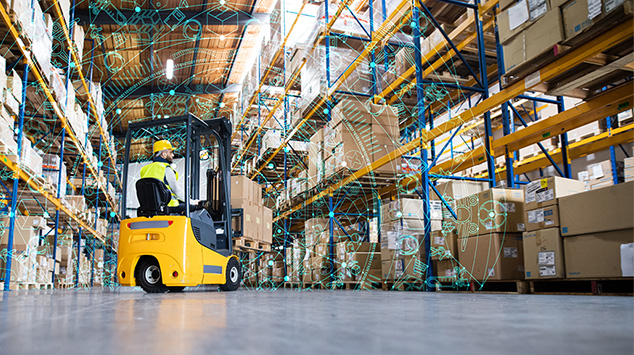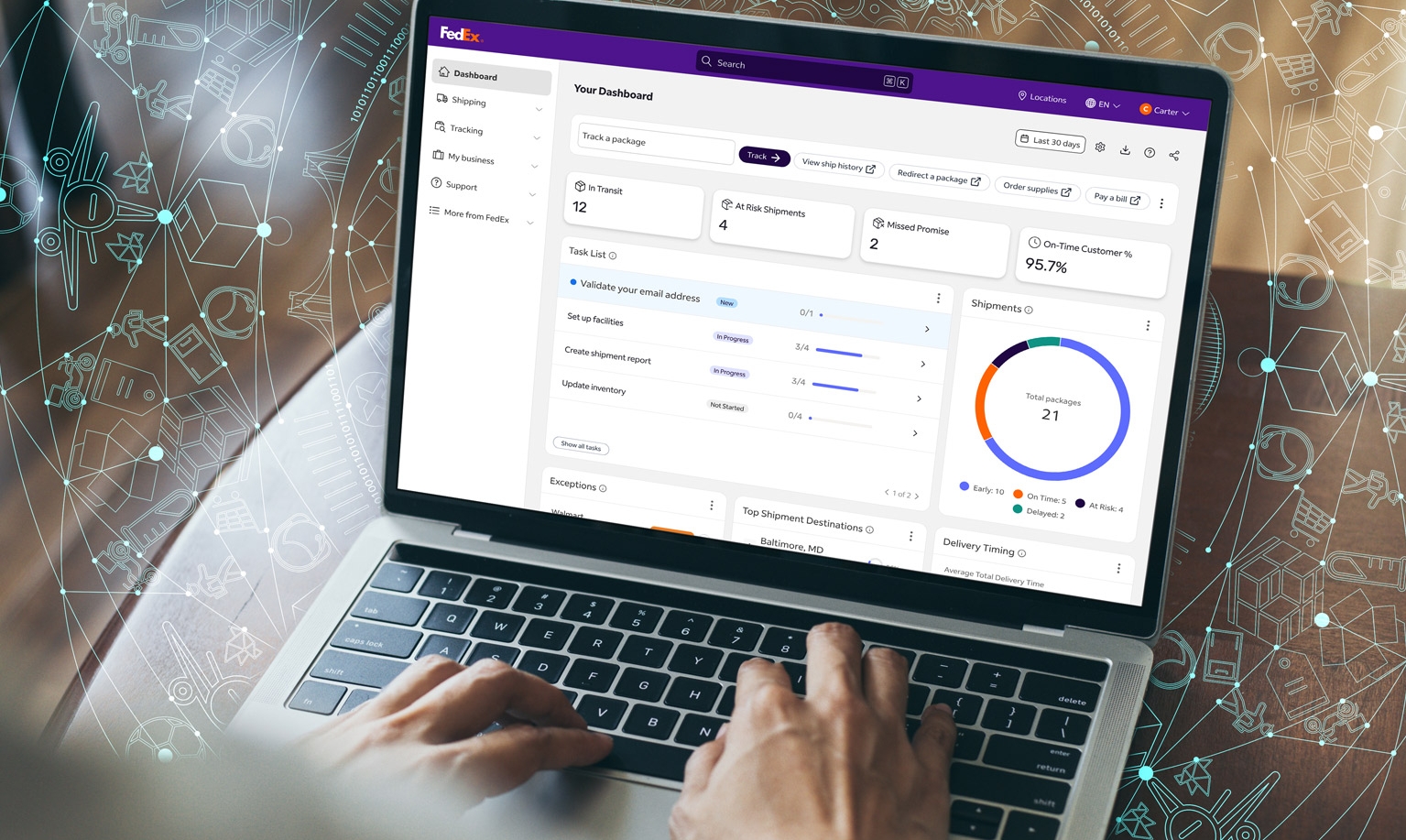What is Logistics Intelligence?
You're getting customer complaints about delayed deliveries, but your team doesn't know where the breakdown is happening. Your tracking dashboard only shows high-level status updates, but not what's causing delays or how to fix them. Whenever something goes wrong, your team is left chasing down data from carrier portals and relying on account managers to investigate.



Many logistics and operations teams face the same challenge: a lack of real-time visibility into their shipping ecosystem. The data exists, but it's locked up in silos, buried in carrier systems or only accessible through manual workarounds.
The solution is logistics intelligence. By unlocking and analyzing first-party shipping data, your operations teams gain awareness of what's really happening in the delivery lifecycle so they can act faster, reduce friction and create better end-to-end delivery experiences.
- Logistics intelligence unlocks near-real-time, end-to-end visibility across the delivery lifecycle, helping operations teams make smarter decisions proactively.
- First-party shipping data and AI-driven tools enable more accurate delivery estimates, streamlined returns and a consistent customer experience.
- Logistics intelligence creates measurable cross-functional value, empowering operations, marketing and customer service teams with actionable insights that drive efficiency and brand loyalty.
Why does logistics intelligence matter?
Logistics intelligence uses first-party shipping and tracking data to monitor, manage and optimize logistics operations across the order lifecycle, from pre-purchase through delivery and returns.
By transforming raw logistics data into actionable insights, logistics intelligence empowers operations and supply chain teams to improve performance and make smarter, faster decisions.
Without this visibility, businesses struggle to spot disruptions, leading to delays and higher costs. As expectations rise, logistics intelligence provides the clarity it takes to stay competitive without sacrificing control or efficiency.



How does logistics intelligence work?
Logistics intelligence is built on three key components:
- First-party shipping data from carriers
- Analytic tools that turn data into insights
- AI-powered technologies that streamline decision-making and responses
Together, these elements allow your business to monitor shipments in near-real time, identify trends, address bottlenecks and even predict delivery outcomes based on actual performance data.
For example, here’s how logistics intelligence can power a streamlined returns process for an e-commerce company:
- First-party carrier data provides granular visibility into return shipments, including when items are dropped off, scanned or delayed in transit.
- Analytics tools process this data to uncover trends, like return frequency by product, giving teams a clearer understanding of root causes.
- Teams use a single, centralized platform to manage digital front-end experience, data exchange and physical transportation of returns.
These steps create a valuable feedback loop for businesses in the returns process, helping reduce preventable returns, optimize logistics and enhance overall efficiency.
5 strategies for leveraging logistics intelligence
With growing pressure to deliver faster and operate smarter, logistics intelligence gives your supply chain teams the end-to-end visibility they need to work more efficiently and ship with confidence. Here are five ways it can transform operations:
- Boost customer satisfaction with predictive accuracy
When powered by high-volume, first-party carrier data, logistic intelligence tools can estimate delivery times with increased accuracy. For example, fdx systems draw on historical data across FedEx’s entire network to generate Predictive Delivery Estimates (PDEs) accurate to within a four-hour window.
Precise estimates boost customer satisfaction and empower companies to confidently offer shipping incentives — like free two-day delivery — backed by reliable performance data. - Identify and resolve delivery issues
Logistics intelligence makes it easier to determine where and why delivery issues occur.
For example, fdx offers end-to-end visibility across the order lifecycle with over 35 scan events per package, compared to 5 for most competitors. With access to detailed scan-level data, your team can see whether a package is in transit, held at a facility or delayed during the last-mile handoff.
Additional capabilities such as Photo Proof on Delivery, Signature Proof on Delivery and GPS-based delivery verification can help validate successful deliveries and reduce customer disputes.
Your team can also leverage powerful analytics to identify issues quickly and address them more proactively. Suppose delays frequently occur at a specific transfer point. A logistics intelligence tool would flag the problem early, enabling you to reallocate volume or adjust timelines before more customers are impacted. - Optimize carrier and route performance
Logistics intelligence provides your operations teams with the insights they need to make informed decisions regarding strategy, efficiency, planning and forecasting.
Instead of relying on anecdotal feedback or subjective assessments, your business can evaluate customer experience and internal visibility based on actual delivery timelines, exceptions, trends and a range of shipping-based insights, resulting in consistent delivery expectations with customers. - Strengthen trust with streamlined returns
Logistics intelligence simplifies customer returns, enabling faster processing and more transparent communication throughout the process.
A consistent return experience builds customer trust and enhances convenience, especially when paired with a wide and accessible drop-off network.
With a FedEx location within five miles of most residential homes, customers can complete returns quickly and efficiently, supporting a smoother post-purchase journey. - Drive cross-functional value
While logistics intelligence is a powerful tool for operations and logistics teams, it also unlocks opportunities for marketing, e-commerce and customer experience.
For example, sending retail and e-commerce customers to third-party websites to track their packages interrupts the brand experience. With fdx’s Branded Order Tracking feature, your team can pull near-real-time delivery data from FedEx into branded tracking pages on your own web properties, ensuring consistency across touchpoints. These pages are also a prime opportunity to offer customers new promotions or product recommendations to encourage them to come back.
This level of transparency and integration strengthens the overall customer journey, turning logistics intelligence into a driver of long-term brand loyalty.
Unlock the value of shipping data
The data to optimize supply chain performance already exists — it’s just a matter of tapping into it.
Logistics intelligence enables businesses to transform shipping and use first-party data to improve efficiency, enhance delivery reliability and reduce operational friction.
From Predictive Delivery Estimates to streamlined returns, these capabilities work together to create a more consistent and customer-centric experience.
Related